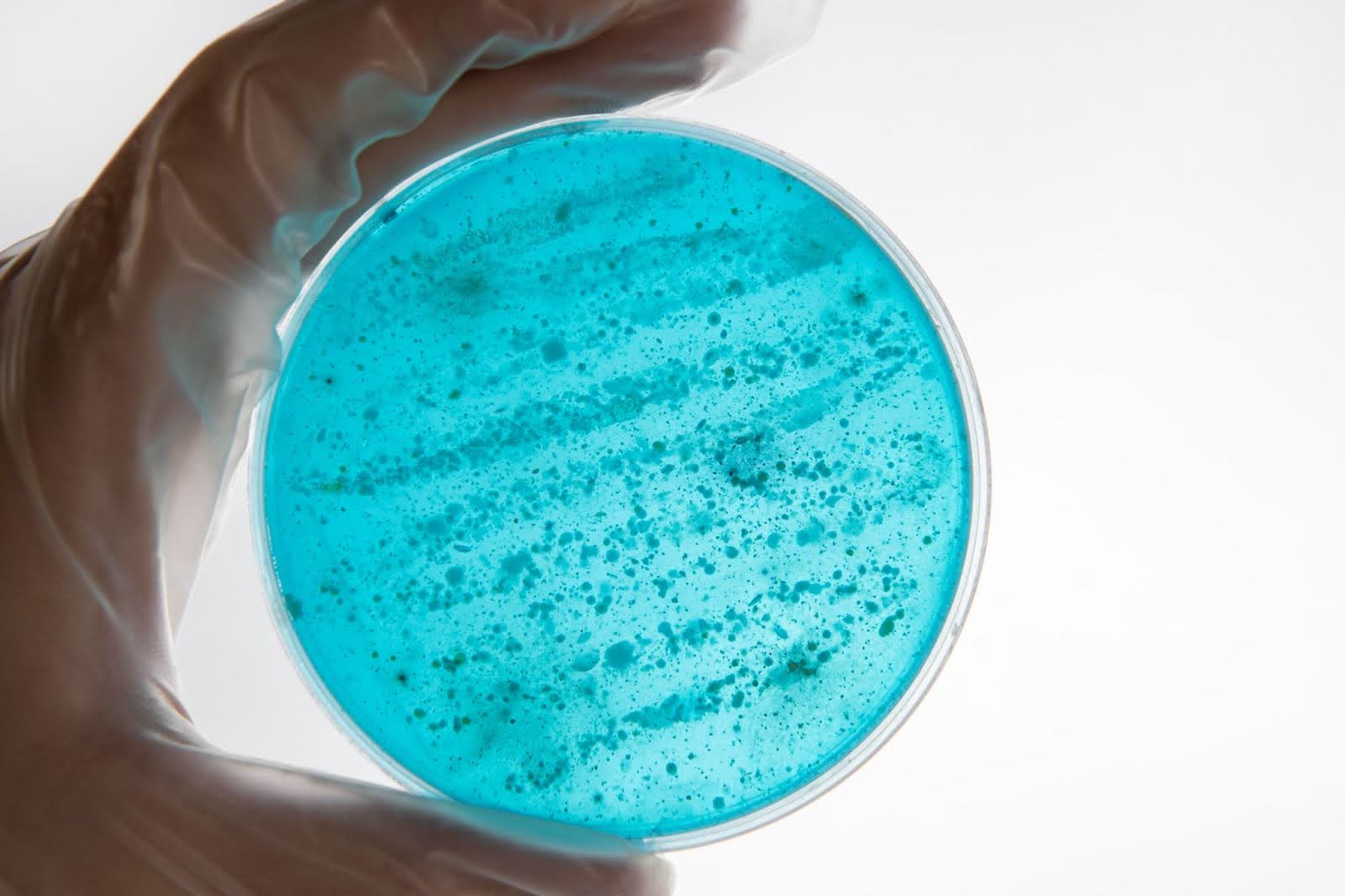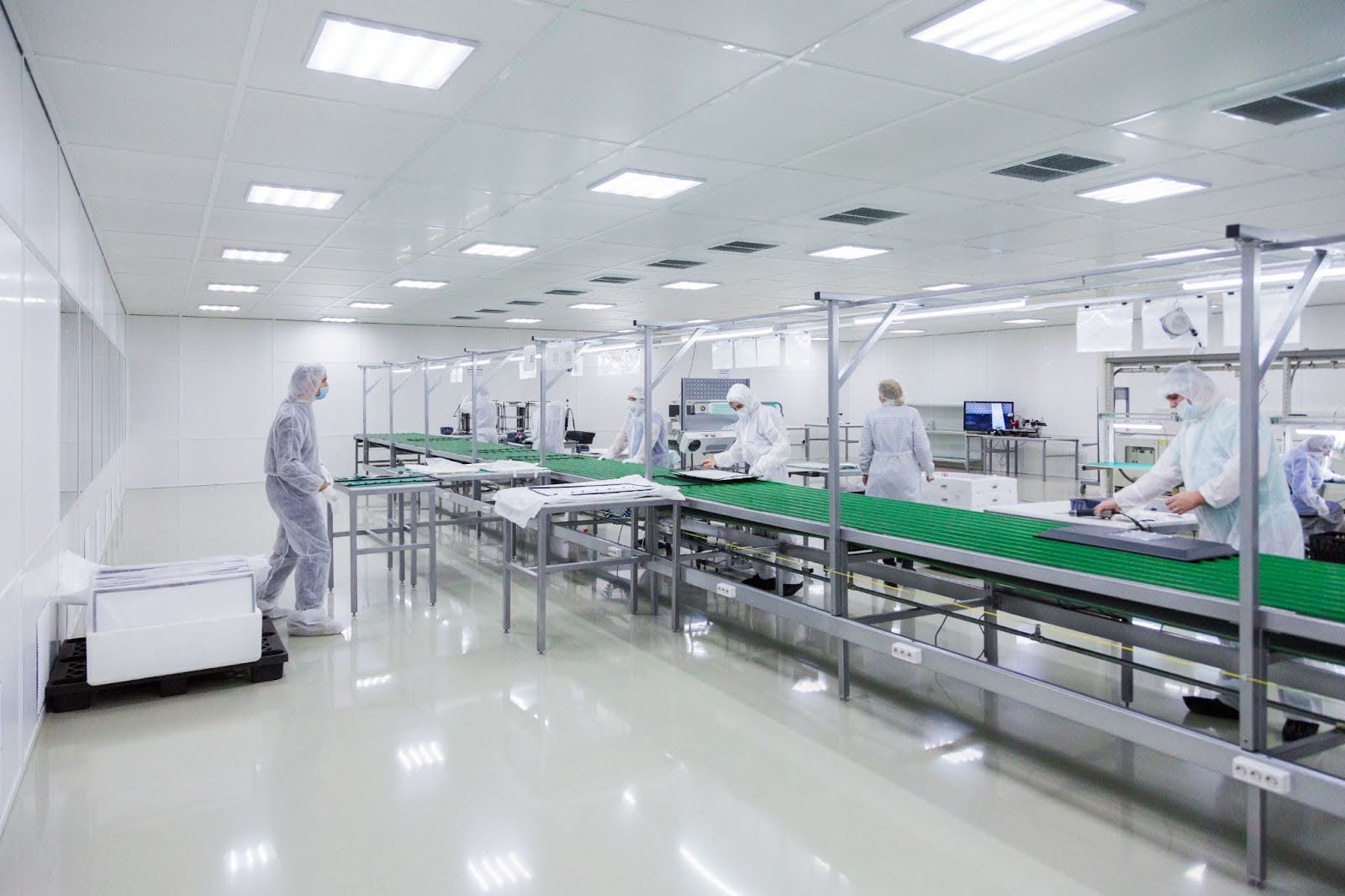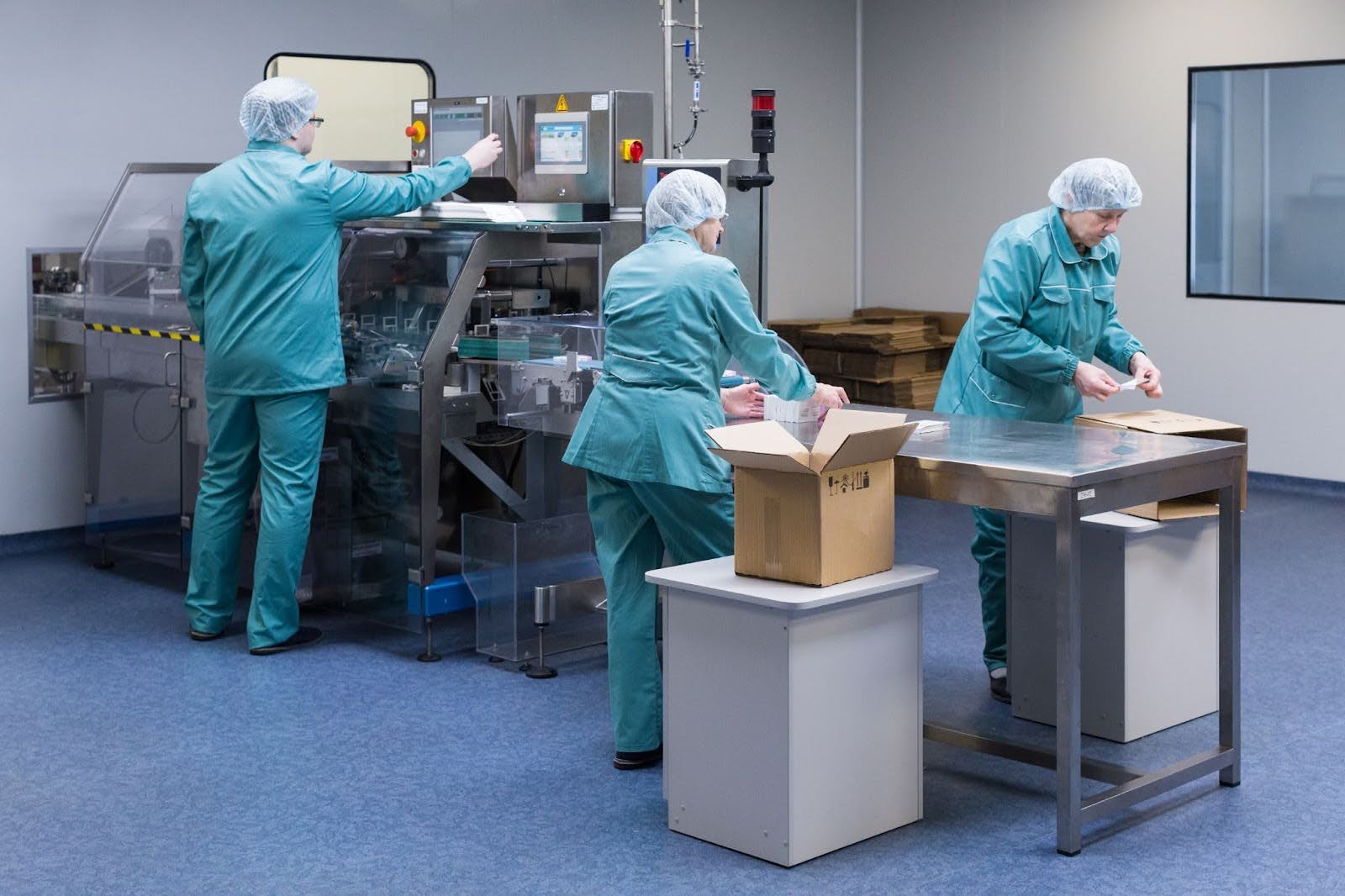by Mrudula Kulkarni
7 minutes
Investigations After Environmental Monitoring Excursions In Sterile Areas: A Deep Dive Into Pharmaceutical Microbiology Practices
Learn how to investigate EM excursions in sterile areas with CAPA, root cause analysis, and regulatory compliance to ensure patient safety.

Environmental monitoring (EM) is the backbone of microbial control in sterile pharmaceutical manufacturing. It provides a continuous check on whether controlled areas, especially aseptic processing zones, are operating within acceptable microbiological limits.
Yet, despite stringent controls, environmental monitoring excursions, instances where results exceed established limits, do occur. When they do, pharmaceutical companies must carry out thorough investigations to determine the root cause, assess product impact, and implement corrective and preventive actions (CAPA).
This article explores, in detail, what investigations after EM excursions involve, why they are critical in sterile areas, regulatory expectations, and best practices for ensuring compliance and patient safety.
What is an EM Excursion in Sterile Areas?
In sterile manufacturing, regulators such as the FDA, EMA, and PIC/S mandate that firms establish microbiological alert and action levels for viable and non-viable particles. An EM excursion happens when monitoring data exceeds these predefined thresholds.
Establishing clear alert and action levels in cleanroom monitoring ensures that each deviation is scientifically justified and appropriately investigated.
Examples include:
- Viable excursions – Excursions can be viable, such as when microbial counts from settle plates, active air samplers, contact plates, or glove prints exceed acceptance criteria.
- Non-viable excursions – When airborne particle counts surpass limits set for ISO-classified cleanrooms, this results in non-viable excursions
- Atypical results – In some cases, even if counts are within limits, the recovery of objectionable or unusual organisms triggers an investigation.
Excursions matter because they are red flags that signal something may have gone wrong with aseptic control. They serve as an early warning that contamination may have reached the environment in which sterile products are manufactured, thereby directly threatening sterility assurance.
Aligning EM programs with ISO 14644 cleanroom classifications helps correlate microbial results with particle data for better contamination control.
Why Are Investigations Critical?
Investigating EM excursions is not simply about checking a compliance box. At the heart of every investigation lies patient safety, because contaminated products can have life-threatening consequences. Investigations also provide clarity on the integrity of production batches manufactured during the excursion period.
From a systems perspective, they help organizations identify weaknesses, whether in people, processes, or facilities, that could allow contamination to occur. Furthermore, regulators expect detailed, science-based investigations that not only explain the event but also show what is being done to prevent recurrence.
The importance of a structured investigation is highlighted in FDA Warning Letters and EMA inspection findings, where inadequate EM excursion handling has led to enforcement actions, import alerts, or even facility shutdowns.
Steps In Investigating EM Excursions
Investigations after EM excursions are multi-layered and demand cross-functional involvement from microbiology, production, quality assurance (QA), and engineering teams.
1. Immediate Containment Actions
The first and most immediate step is containment; the step upon identifying an excursion is to secure the environment and product. When a monitoring result indicates an excursion, production teams act quickly to secure the environment and product. Batches produced during or after the excursion may be quarantined.
Additional monitoring samples may be taken to confirm the result. In some cases, production may be paused while operators and supervisors review conditions. The goal of containment is to ensure that potential risks do not spread while the deeper investigation takes place.
2. Verification of the Data
Before assuming a true contamination event or once containment is secured, the laboratory must verify the data. It is essential to confirm whether the result is genuine and not the consequence of laboratory error.
This involves checking the way samples were handled, the calibration of equipment such as air samplers and particle counters, the performance of the media through growth promotion testing, and the qualifications of analysts who processed the samples. A rigorous data verification step avoids unnecessary escalations due to false positives.
3. Environmental and Process Review
The investigation then moves into a detailed review of the environment and the process itself. The heart of the investigation is reviewing what was happening in the sterile area at the time of the excursion.
Investigators carefully examine the cleanroom conditions at the time of the excursion, including HVAC performance, differential pressures, and records of temperature and humidity.
They also look into what production activity was happening, whether critical operations were underway, whether interventions occurred, and whether the product was exposed. Cleaning and disinfection records are reviewed, as well as the compliance of personnel with gowning and aseptic practices.
Any recent maintenance or material transfers, such as recent repairs, equipment introduction, or material transfer, are also considered, since these events often correlate with excursions. Often, excursions correlate with lapses in aseptic behavior or cleaning failures rather than systemic facility design issues.
4. Microbiological Identification and Trending
Another critical element is the identification of the microorganism recovered during the excursion. Advanced methods such as MALDI-TOF MS or genetic sequencing enable accurate identification.
Companies can accurately determine whether the isolate is a common skin commensal, an environmental organism linked to facility or cleaning, or something more concerning, such as a spore-former or mold (pointing to inadequate disinfection.
Identification provides vital clues about the likely source and, therefore, about the effectiveness of current contamination control measures. Applying the principles from USP <1116> alert and action levels ensures trending and alert systems are rooted in statistical, risk-based evaluation.
At the same time, investigators must assess EM data trends. A single isolated excursion may have less impact than a recurring pattern of similar results, which can indicate systemic weaknesses.
5. Impact Assessment on Product
Perhaps the most sensitive step is the assessment of product impact. The investigation must establish whether any sterile batches manufactured during the excursion could have been compromised. This involves asking whether products were exposed in the affected area, whether interventions took place in close proximity, and whether sterility test results or media fills still demonstrate batch integrity. In borderline situations, sterility testing may be repeated, or products may be placed on extended hold. In the most serious cases, companies may decide to reject lots to avoid patient risk.
6. Root Cause Analysis (RCA)
Once investigators gather sufficient evidence, they proceed to root cause analysis. Techniques such as the fishbone diagram, the “5 Whys” method, or Failure Modes and Effects Analysis (FMEA) help to drill down beyond superficial explanations. The aim is to identify not just immediate errors but systemic contributors.
For example, it is not enough to note that glove fingertip samples failed; the investigation must determine whether this was due to inadequate operator training, poorly fitting gowns, insufficient glove integrity checks, or even cultural issues around aseptic discipline. Only by addressing the underlying cause can meaningful preventive action be designed.
7. Corrective and Preventive Actions (CAPA)
The final stage is the development and implementation of corrective and preventive actions to prevent recurrence. These may include retraining operators, revising SOPs for cleaning and disinfection, enhancing HVAC controls, upgrading EM programs, or strengthening gowning qualifications.
A good CAPA plan must be specific, measurable, and tracked for effectiveness. Partnering with trusted environmental monitoring vendors and tools supports reliable data collection, analysis, and CAPA traceability. Regulators often look closely at CAPA closure records during inspections, as they reveal whether the organization truly learns from its excursions or merely treats them as paperwork exercises.
Regulatory Expectations and Industry Guidance
Guidelines across jurisdictions emphasize the seriousness of EM excursions:
- FDA Guidance on Aseptic Processing (2004) expects detailed documentation, investigation, and scientific justification for product disposition.
- EU Annex 1 (2022 revision) stresses that excursions, especially in Grade A and B areas, require immediate investigation and consideration of batch impact.
- PIC/S PI 007-6 outlines handling of deviations and excursions, highlighting the role of risk assessments.
Non-compliance with these standards often results in major inspectional findings. Recent FDA Warning Letters show repeated citations for inadequate investigations, poor organism identification, or failure to link EM data to product risk. Agencies are particularly critical of firms that dismiss excursions without investigation, rely solely on sterility testing as justification for batch release, or fail to trend and analyze EM data over time. A structured approach to designing an environmental monitoring program helps ensure trending, analysis, and corrective responses are seamlessly integrated.
Common Pitfalls In EM Excursion Investigations
Despite clear expectations, even experienced facilities fall into certain traps when investigating EM excursions:
- Some treat excursions as isolated events and ignore long-term trends.
- Others hastily label results as “false positives” without scientific evidence.
- Documentation may be incomplete, or investigations may lack depth, focusing only on immediate errors rather than systemic issues.
- Over-reliance on product sterility test results as justification for batch release.
- A particularly common weakness is poor communication between microbiology labs and production teams, which delays the effectiveness of investigations.
Avoiding these pitfalls requires a quality culture that treats EM excursions as learning opportunities rather than nuisances.
Best Practices for Robust Investigations
To avoid these pitfalls, pharmaceutical organizations must foster a culture where EM excursions are viewed not as inconveniences but as opportunities to strengthen contamination control. To ensure investigations meet both scientific and regulatory standards, organizations should:
- Establish well-documented SOPs with defined timelines for investigation.
- Train staff regularly on aseptic techniques and contamination control.
- Adopting advanced technologies for microbial identification and data analytics.
- Integrating EM excursion handling into a broader Quality Risk Management (QRM) framework allows for systematic, science-based decision-making.
- Leverage digital EM systems that allow real-time alerts, data trending, and root cause correlation.
Some leading companies are now exploring AI-driven EM analytics and digital twins of cleanrooms to predict excursions before they occur. This proactive approach aligns with the industry’s shift toward pharma 4.0 and quality by design (QbD) principles.
Conclusion
Investigations after environmental monitoring excursions in sterile areas are not just procedural obligations; they are critical safeguards for patient safety and regulatory compliance. A structured approach that combines data verification, environmental review, microbial identification, impact assessment, and CAPA ensures that pharmaceutical companies can respond effectively to excursions.
Ultimately, the goal is not just to resolve a single event but to strengthen the aseptic ecosystem so that future risks are minimized. In a sector where even the smallest contamination can have life-threatening consequences, rigorous EM excursion investigations represent both a regulatory expectation and a moral responsibility.
FAQ’s
1. What is an EM excursion in pharmaceutical cleanrooms?
An EM excursion occurs when environmental monitoring results in both viable or non-viable, exceed established alert or action limits in sterile areas, signaling possible contamination risk.
2. How are EM excursions investigated in sterile areas?
Investigations involve immediate containment, verification of results, environmental and process review, microbial identification, product impact assessment, root cause analysis, and CAPA implementation.
3. Do EM excursions always affect product sterility?
Not always. Product impact depends on factors such as where the excursion occurred, the type of organism recovered, the stage of manufacturing, and sterility assurance controls in place.
4. What are regulatory expectations for EM excursion handling?
FDA, EMA, and PIC/S require thorough documentation, scientific investigation, and risk-based decisions. Regulators expect companies to link excursions to product safety and demonstrate effective CAPA.




